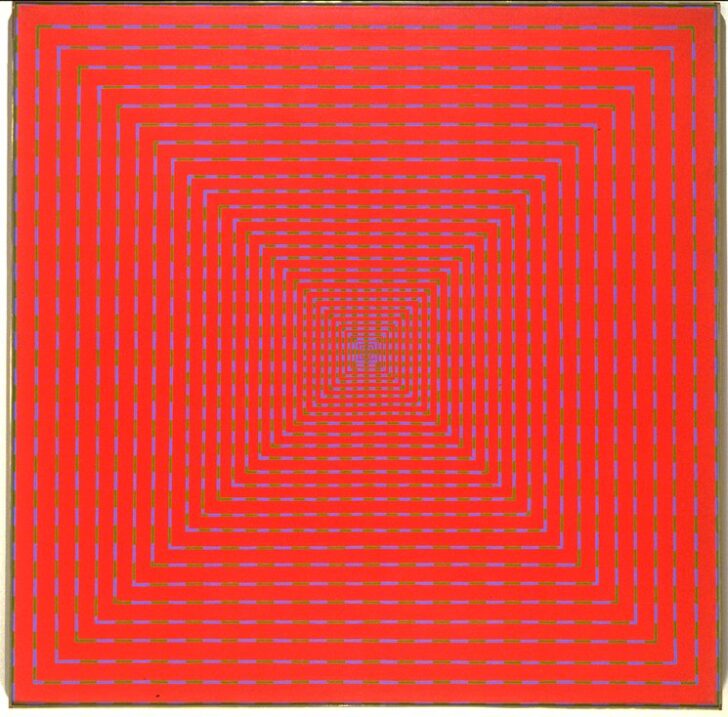Mercurius in the Vessel
Richard Anuszkiewicz

Description
Richard Anuszkiewicz developed a keen interest in art as a young child growing up in Pennsylvania. His early promise earned him a four-year scholarship to the Cleveland Institute of Art. After graduating with his B.F.A. degree in 1953, Anuszkiewicz attended the Yale University School of Art and Architecture where he was a student of Minimalist artist Josef Albers. Albers left a lasting impression on his student’s use of line and color. As his career developed, Anuszkiewicz would adopt the technique of mixing colors on the surface of the painting rather than on a palette, an approach first used by the Impressionists.
Mercurius in the Vessel, executed early in the artist’s career, demonstrates Anuszkiewicz’s growing fascination with color and optical effects. As colors meet one another on the canvas, the viewer is invited into a domain created by repetition.
Regina DiBella
Modern and Contemporary Art Intern
Summer 2003
Gallery Rotation Spring/Summer 2011
Richard Anuszkiewicz
United States, born 1930
Mercurius in the Vessel
1963
Oil on canvas
Bequest of W. Hawkins Ferry, 1988/1.137
Richard Anuszkiewicz was a pioneer in the development of American Op (short for Optical) Art in the 1960s, a movement concerned with exploring the optical effects of perceptual processes. Anuszkiewicz, who studied under color theorist Josef Albers, was particularly interested in the effects that neighboring colors could have on one another. Mercurius in the Vessel demonstrates the dazzling chromatic vibration that can occur when complementary warm and cool colors (such as red and green) meet. The painting’s repeated, concentric geometric shapes accentuate the ambiguity this juxtaposition of colors creates between receding and projecting space. Although his rigidly structured compositions are carefully planned, for Anuszkiewicz such effects are as emotional as they are scientific. He has said, “I’m interested in making something romantic out of a very, very mechanistic geometry.”
Subject Matter:
Richard Anuszkiewicz was a pioneer in the development of American Op (short for Optical) Art in the 1960s, a movement concerned with exploring the optical effects of perceptual processes. Anuszkiewicz, who studied under color theorist Josef Albers, was particularly interested in the effects that neighboring colors could have on one another. Mercurius in the Vessel demonstrates the dazzling chromatic vibration that can occur when complementary warm and cool colors (such as red and green) meet. The painting’s repeated, concentric geometric shapes accentuate the ambiguity this juxtaposition of colors creates between receding and projecting space. Although his rigidly structured compositions are carefully planned, for Anuszkiewicz such effects are as emotional as they are scientific. He has said, “I’m interested in making something romantic out of a very, very mechanistic geometry.”
Physical Description:
Concentric lines of bright red alternate with lines of blue and green to create an optical illusion of receeding squares. The juxtaposition of these colors also creates an appearance of intersecting orange lines and hues of purple.
Usage Rights:
If you are interested in using an image for a publication, please visit https://umma.umich.edu/request-image/ for more information and to fill out the online Image Rights and Reproductions Request Form.